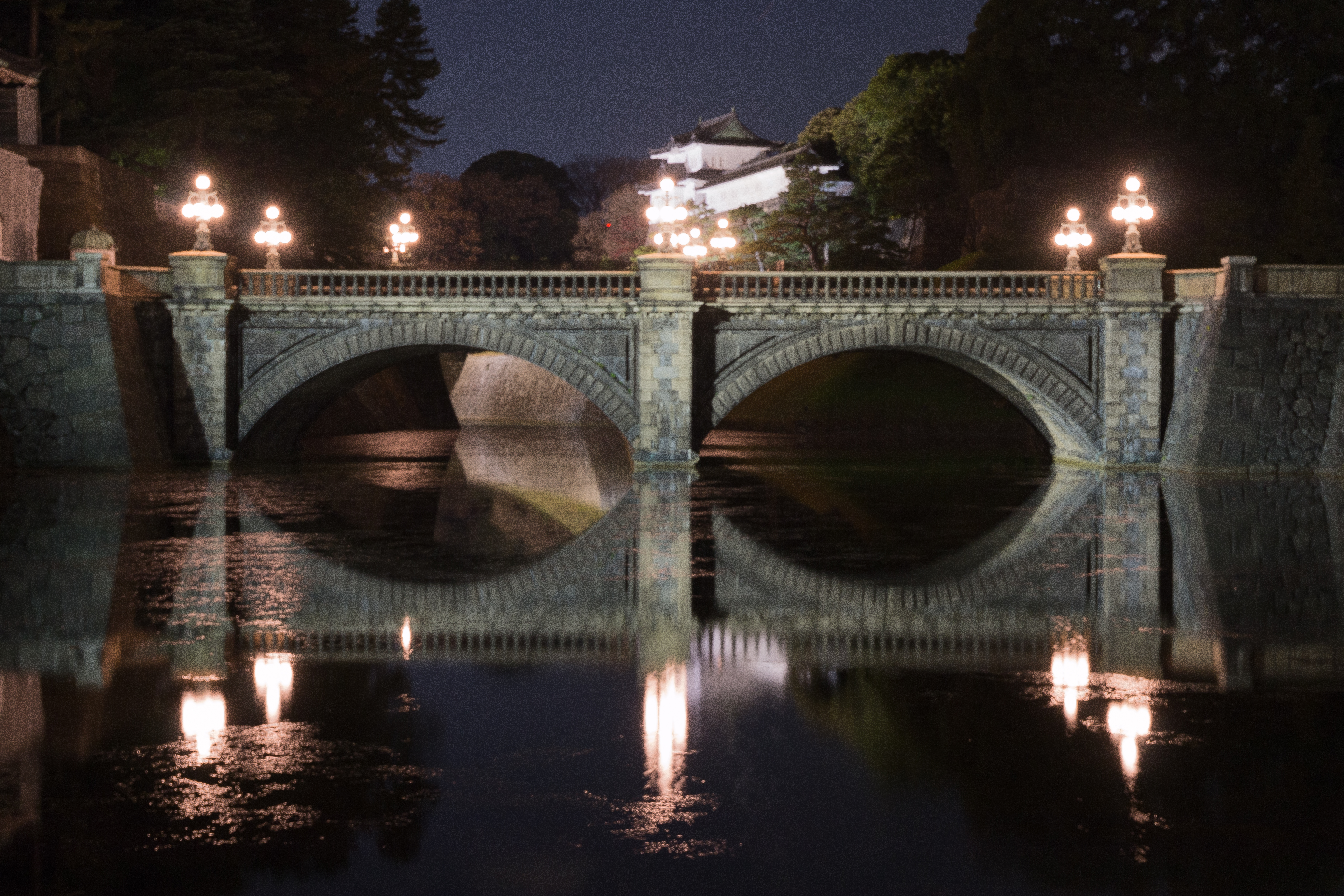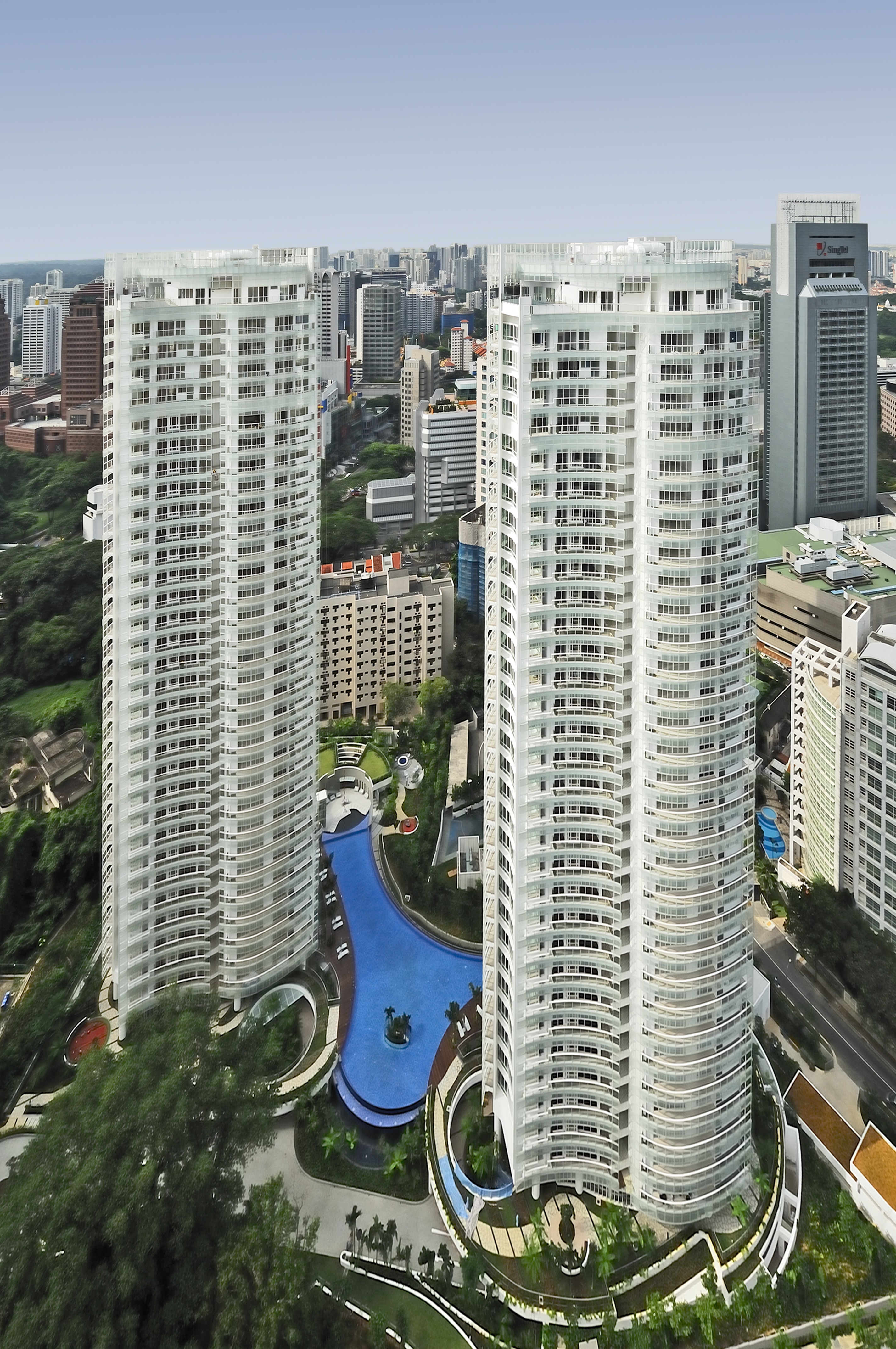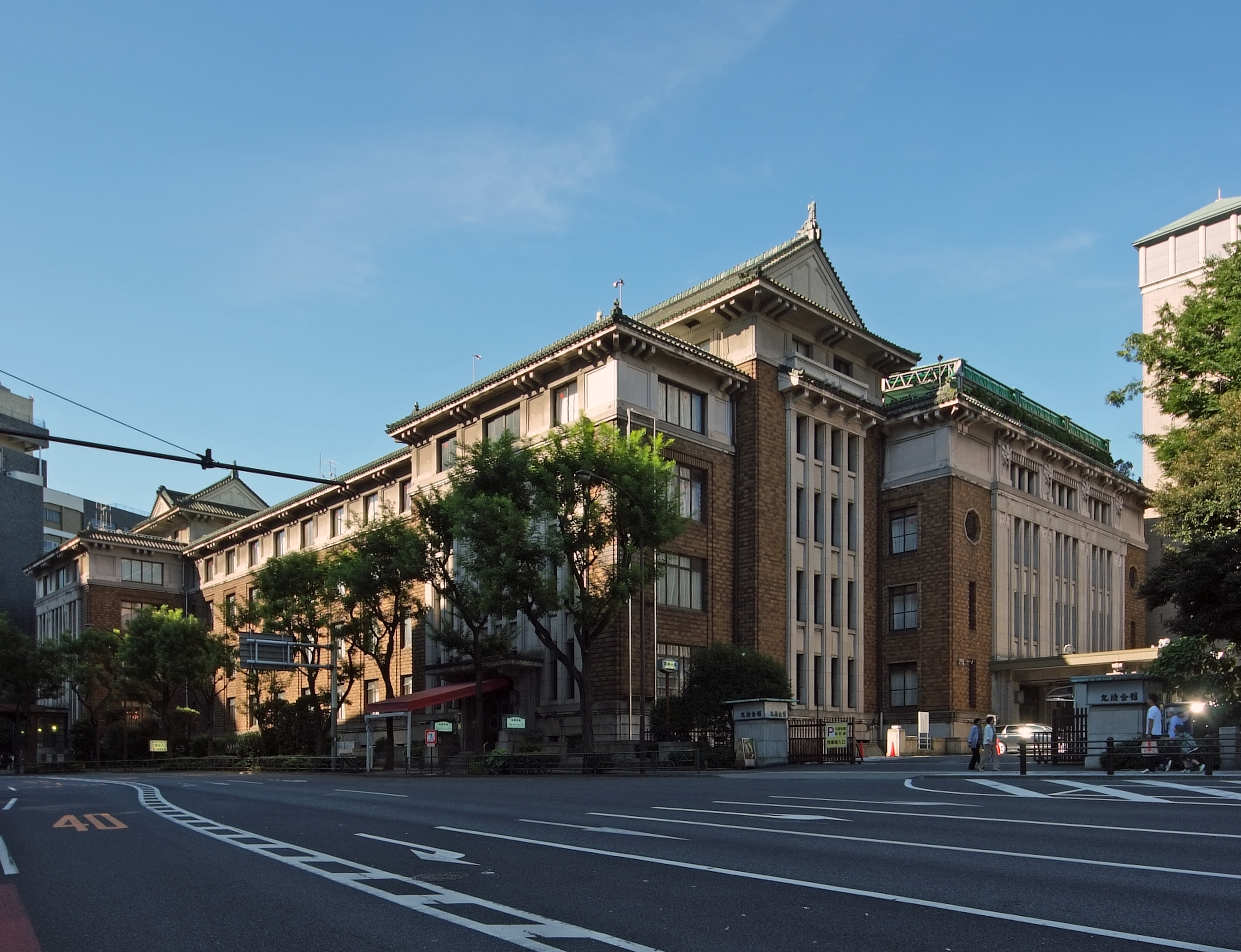|
Kudankita
is a district of Chiyoda, Tokyo, Japan, consisting of four ''chōme''. It was a part of the former ward of Kōjimachi. As of March 1, 2007, its population is 1,404. Kudankita is a luxury and prestigious residential and business zone. The Yasukuni Shrine is situated near the center of the district. The Kudanshita district is located on the northwestern part of the ward of Chiyoda and borders Ichigayatamachi, Shinjuku. It also borders Nishi-Kanda and Kanda-Jinbōchō to the east, Kudanminami and Kitanomaru Kōen to the south, and Fujimi and Iidabashi to the north. Economy Tecmo had its headquarters in Kudankita. The construction company, Nakano Corporation, is also headquartered in the district. District Kudankita 1-chōme * Wako Kudan Junior & Senior High School * Tokyo University of Science Kudan Campus *Kitanomaru Square *Jissen Rinri Kōseikai *The Japan Society of Applied Physics Kudanminami 2, 3 and 4 are part of the Banchō area. Kudankita 2-chōme * Yasu ... [...More Info...] [...Related Items...] OR: [Wikipedia] [Google] [Baidu] |
Banchō
is an area in Chiyoda, Tokyo, Japan, consisting of the six "-banchō" districts, to , as well as parts of Kudanminami and Kudankita, and Fujimi, Chiyoda, Tokyo, Fuijimi. The Banchō area is located to the west of the Tokyo Imperial Palace, Imperial Palace. The historical area is roughly triangular in shape, forms its southern boundary. A rough line from to Ushigome Mitsuke forms its eastern boundary, and the railway of the Chūō Main Line along the outer moats of Ichigaya and Ushigome forms its northwestern boundary from Yotsuya to Ushigome Mitsuke. runs through its historical boundaries. Present day area with "Banchō" in the districts names stops south of this avenue. History Edo period The area was the location of the residences of the six groups, the hatamoto samurai in charge of the guard of the Edo castle. During Edo times the area was very uniform, packed in hatamoto residences resembling each other with no signage, making it difficult for external visitors ... [...More Info...] [...Related Items...] OR: [Wikipedia] [Google] [Baidu] |
Chiyoda, Tokyo
is a Special wards of Tokyo, special ward located in central Tokyo, Japan. It is known as Chiyoda City in English language, English.Profile ." ''City of Chiyoda''. Retrieved on December 28, 2008. It was formed in 1947 as a merger of Kanda, Tokyo, Kanda and Kōjimachi wards following Tokyo City's Local Autonomy Act, transformation into Tokyo Metropolis. The modern Chiyoda ward exhibits contrasting Shitamachi and Yamanote geographical and cultural divisions. The Kanda area is in the core of Shitamachi, the original commercial center of Edo-Tokyo. On the other hand, the western part of the Kōjimachi area typically represents a Yamanote district. Chiyoda consists of the Tokyo Imperial Palace, Imperial Palace and a surrounding radius of about a kilometer. As of October 2020, the ward has a p ... [...More Info...] [...Related Items...] OR: [Wikipedia] [Google] [Baidu] |
Nakano Corporation
, is a Japanese multinational general construction contractor engaging in design, construction, civil engineering, technical assistance, and real estate development projects for its clients, which include corporations, governments and individuals. Nakano was established in 1885 by Kisaburo Nakano and specialised in fine masonry construction works for projects including the Japanese Parliament Diet Building, Nihon-bashi Bridge, as well as the Imperial Theatre. The corporation is headquartered at 4-2-28 Kudankita in Chiyoda-ku, central Tokyo, Japan, and maintains international offices in United States, Singapore, Malaysia, Thailand, Indonesia, China, and Vietnam. Internationally, Nakano Corporation has completed in excess of 1,300 projects in 37 nations throughout Southeast Asia, North America, Europe, Africa, and Oceania. Operations In Japan Nakano's domestic design and construction operations in Japan include educational, office, residential, commercial, industrial, heal ... [...More Info...] [...Related Items...] OR: [Wikipedia] [Google] [Baidu] |
Yasukuni Shrine 201005
is a Shinto shrine located in Chiyoda, Tokyo. It was founded by Emperor Meiji in June 1869 and commemorates those who died in service of Japan, from the Boshin War of 1868–1869, to the two Sino-Japanese Wars, 1894–1895 and 1937–1945 respectively, and the First Indochina War of 1946–1954, including war criminals. The shrine's purpose has been expanded over the years to include those who died in the wars involving Japan spanning from the entire Meiji and Taishō periods, and the earlier part of the Shōwa period. The shrine lists the names, origins, birthdates, and places of death of 2,466,532 men, women, children, and various pet animals. Among those are 1,068 convicted war criminals, 14 of whom are A-Class (convicted of having been involved in the planning, preparation, initiation, or waging of the war). This has led to many controversies surrounding the shrine. Another memorial at the Honden (main hall) building commemorates anyone who died on behalf of Japan, ... [...More Info...] [...Related Items...] OR: [Wikipedia] [Google] [Baidu] |
Tecmo
, was a Japanese video game Video games, also known as computer games, are electronic games that involves interaction with a user interface or input device such as a joystick, game controller, controller, computer keyboard, keyboard, or motion sensing device to gener ... corporation founded in 1967. It had its headquarters in Kudankita, Chiyoda, Tokyo, Chiyoda, Tokyo. Its subsidiary, Tecmo Inc, was located in Torrance, California. Tecmo was formerly known as Tehkan. Tecmo is known for the ''Captain Tsubasa'', ''Dead or Alive (series), Dead or Alive'', ''Deception (video game series), Deception'', ''Fatal Frame'', ''Gallop Racer'', ''Monster Rancher (series), Monster Rancher'', ''Ninja Gaiden'', ''Rygar (arcade game), Rygar'', ''Star Force'' and ''Tecmo Bowl'' video game series. When it was still called Tehkan, the company released arcade games such as ''Bomb Jack'', ''Gridiron Fight'' and ''Tehkan World Cup''. The company was founded on July 31, 1967 as a supplier of cle ... [...More Info...] [...Related Items...] OR: [Wikipedia] [Google] [Baidu] |
Yasukuni Shrine
is a Shinto shrine located in Chiyoda, Tokyo. It was founded by Emperor Meiji in June 1869 and commemorates those who died in service of Japan, from the Boshin War of 1868–1869, to the two Sino-Japanese Wars, 1894–1895 and 1937–1945 respectively, and the First Indochina War of 1946–1954, including war criminals. The shrine's purpose has been expanded over the years to include those who died in the wars involving Japan spanning from the entire Meiji and Taishō periods, and the earlier part of the Shōwa period. The shrine lists the names, origins, birthdates, and places of death of 2,466,532 men, women, children, and various pet animals. Among those are 1,068 convicted war criminals, 14 of whom are A-Class (convicted of having been involved in the planning, preparation, initiation, or waging of the war). This has led to many controversies surrounding the shrine. Another memorial at the Honden (main hall) building commemorates anyone who died on behalf of Japa ... [...More Info...] [...Related Items...] OR: [Wikipedia] [Google] [Baidu] |
Nishi-Kanda
is a district of Chiyoda, Tokyo, Japan, consisting of 1-chōme to 3-chōme. As of April 1, 2007, its population is 1,044. This district is located on the northern part of Chiyoda Ward. It borders Kanda-Misakichō to the north, (across Kinda-dōri Ave) Kanda-Sarugakuchō to the east, Kanda-Jinbōchō to the south, and (across the Nihonbashi River) Kudankita and Iidabashi to the west. District Nishi-Kanda 1-chōme *Nihon University College of Economics (2nd, 3rd and 5th Building) *Kanda Catholic Church Nishi-Kanda 2-chōme *Nihon University College of Law (7th and 9th Building, Library) *Nihon University Correspondence Division (1st Building) Nishi-Kanda 3-chōme *Asahi Press Education operates public elementary and junior high schools. Ochanomizu Elementary School (お茶の水小学校) is the zoned elementary school for Nishi-Kanda 1-3 chōme. There is a freedom of choice system for junior high schools in Chiyoda Ward, and so there are no specific junior high school zo ... [...More Info...] [...Related Items...] OR: [Wikipedia] [Google] [Baidu] |
Kudanminami
is a district of Chiyoda, Tokyo, Japan, consisting of 1-chōme to 4-chōme. As of March 1, 2007, its population is 2,431. Kudanminami is located on the northwestern part of the Chiyoda ward. The Nihonbashi River and Yasukuni-dōri Ave form its eastern and northern boundaries, respectively. It borders Kanda-Jinbōchō to the east, Gobanchō to the west, Sanbanchō, Hitotsubashi and Yonbanchō to the south, and Kudankita to the north. In addition, it borders Kitanomaru Kōen between its 1-chōme and 2-chōme. The zone is a prestigious business and residential zone. District Kudanminami 1-chōme Kudanminami 1-chōme is situated on the easternmost part of the Kudanminami district. The Nishinomaru Park is situated to the west. This subdistrict is home to a number of office buildings, facilities, and public institutions. *Chiyoda Ward Office *Chiyoda Kaikan * Kudan Kaikan *Kudan Common Government Office Building *Kudan Common Government Office Building No.2 (Tokyo Legal Affairs ... [...More Info...] [...Related Items...] OR: [Wikipedia] [Google] [Baidu] |
Chiyoda Ward Kudan Secondary School
is Japanese for "field of a thousand generations", and may refer to: Japanese places *Chiyoda, Gunma, Japan * Chiyoda, Hiroshima, Japan * Chiyoda, Ibaraki, Japan * Chiyoda, Saga, Japan *Chiyoda, Tokyo, a special ward in central (as administrative unit: former) Tokyo City, eastern Tokyo, Japan * Chiyoda, Chiyoda, Tokyo, a district in Chiyoda ward covering the Imperial Palace and the Higashi Gyoen, the publicly accessible East Garden Japanese naval ships * (1866), Japan's first domestically built, engine-powered warship * (1891), a protected cruiser of the Imperial Japanese Navy during the First Sino-Japanese War, Russo-Japanese War and World War I * (1936), a of the Imperial Japanese Navy during World War II *, a submarine rescue ship of the Japan Maritime Self-Defense Force, commissioned in 1985 Characters *Chiyoda, a character in the game and media franchise ''Kantai Collection'' Others * Chiyoda armored car * Edo Castle or Chiyoda Castle, a flatland castle in Chiyoda, Tokyo, ... [...More Info...] [...Related Items...] OR: [Wikipedia] [Google] [Baidu] |
Hosei University
is a private university based in Tokyo, Japan. The university originated in a school of law, Tōkyō Hōgakusha (, i.e. Tokyo association of law), established in 1880, and the following year renamed Tōkyō Hōgakkō (, i.e. Tokyo school of law). This was from 1883 headed by Dr. Gustave Boissonade, and was heavily influenced by the French legal tradition. It merged in 1889 with a school of French studies, Tōkyō Futsugakkō (, i.e. Tokyo French school), that had been founded three years earlier. It adopted the name Hosei University (, ''Hōsei daigaku'', i.e. university of law and politics) in 1903 and was recognized as a private university in 1920. Other notable figures involved in its foundation include Dr. Masaaki Tomii, and Dr. Ume Kenjirō, "Father of the Japanese Civil Code". In addition, Hosei University belongs to Tokyo Big6 Baseball League. The league is one of the most traditional college sports leagues in Japan. Hosei University is popular for high school stude ... [...More Info...] [...Related Items...] OR: [Wikipedia] [Google] [Baidu] |
Omura Masujiro Statue 20051229
Omura (小村) or Ōmura (大村) are Japanese surnames, but may also refer to: * Ōmura, Nagasaki, a city located in Nagasaki Prefecture, Japan * Omura's whale (''Balaenoptera omurai''), a species of rorqual about which very little is known People * Ōmura Masujirō (大村 益次郎, 1824-1869), a Japanese military leader and theorist in Bakumatsu period Japan * Ōmura Sumihiro (大村 純熈, 1830-1882), the 13th and final daimyō of Ōmura Domain in Hizen Province, Kyūshū, Japan * Ōmura Sumitada (大村 純忠, 1533-1587), a Japanese daimyō lord of the Sengoku period * Ōmura Yoshiaki, a ruling head of the clan of Omura throughout the latter Sengoku Period of Feudal Japan * Hideaki Ōmura (大村 秀章, born 1960), a Japanese politician and the governor of Aichi Prefecture * Jim K. Omura (born 1940), an electrical engineer and information theorist *, Japanese footballer * Norio Omura (小村 徳男, born 1969), a former Japanese football defender * Satoshi Omura (大村 智 ... [...More Info...] [...Related Items...] OR: [Wikipedia] [Google] [Baidu] |
The Japan Society Of Applied Physics
(JSAP) is a Japanese group of researchers in the field of applied physics. JSAP originated in 1932 from a voluntary forum of researchers belonging to the University of Tokyo and the Institute of Physical and Chemical Research. During World War II, most research, even applied, was frozen. In 1946, the society was established as an official academic society. Oyo Buturi ''Oyo Buturi'' () is the membership subscription of the Japan Society of Applied Physics. It is published monthly, in Japanese. ''Oyo Buturi International'' (1998) and ''JSAP International'' (2000-2008) are related English counterparts to ''Oyo Buturi''. Publications of the Japan Society of Applied Physics * ''Japanese Journal of Applied Physics'' * ''Applied Physics Express ''Applied Physics Express'' or ''APEX'' is a scientific journal publishing letters, with usually no more than three pages per (concise) article. The main purpose is to rapidly publish original, timely, and novel research papers in applied p ... [...More Info...] [...Related Items...] OR: [Wikipedia] [Google] [Baidu] |






